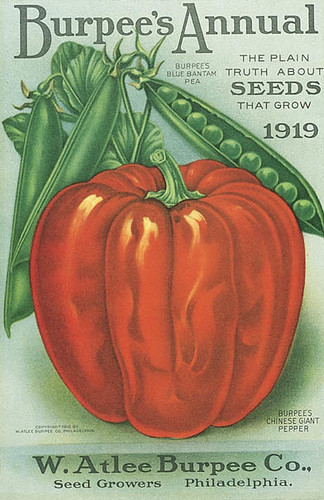It’s Winter But You Can Still Dream Of Gardening!

There’s nothing better on a cold January afternoon than to snuggle up with your beverage of choice and a pile of wonderful SEED CATALOGUES! Not sure which catalogues to use? Here is a list from Rutgers of mail order seed companies to get you started: https://njaes.rutgers.edu/FS1163/

Be sure to go beyond the beautiful photographs. Make this the year that you learn how to UNLOCK THE CODES. Actually, it isn’t secret; you just need to look at each catalogue’s code guide. Depending upon the catalogue, you can find information from cold hardiness, to the sustainability of the practices followed in growing the seed, and lots of information about resistance to common diseases and conditions. By the way, much of this information will also be included on seed packets, so that learning “the code” will be useful in many settings. Also, see these fact sheets: https://www.canr.msu.edu/news/seed_catalogs_made_easy and https://blog-yard-garden-news.extension.umn.edu/2018/02/seed-catalogs-decoded.html. And, this episode of The Joe Gardener Show podcast has lots of good information on how to be an informed seed shopper. (Photo credit: “Burpee 1919 Front Cover” by Burpee Gardens is licensed under CC BY-NC-ND 2.0)

Study your winter landscape; what could you plant in the upcoming year to brighten the winter garden? Consider adding winterberry (Ilex verticillata); the red berries add color through much of the winter and then provide food for the birds at a time when there isn’t as much for them to eat. (Photo credit: “winter berries” by qmnonic is licensed under CC BY 2.0)

Reduce your lawn and rethink your environmental impact. For lots of information about why this is important and how to do it, see Jersey Friendly Yards at https://www.jerseyyards.org or join the Homegrown National Park movement, https://homegrownnationalpark.com (Photo credit: “red oak in snow” by Dave Bonta is licensed under CC BY-NC-ND 2.0)

Plan to add native plants to your landscape to support our native insects, birds, and other wildlife and to reduce the need for fertilizers and extra water. Information about native plants, including the names of area nurseries carrying natives, can be found at the Native Plant Society of New Jersey’s website. Some local native nurseries have increased their online ordering as well as curbside pick-up. (Photo credit: “Dry Bee Balm – Monarde séchée” by monteregina is licensed under CC BY-NC-SA 2.0)

Voles, rabbits, and deer can cause damage to plants in the winter, especially young trees and shrubs, by feeding on twigs, bark, leaves, roots, and stems. For help identifying the damage and possible preventive measures, see this factsheet from Iowa State Extension. (Photo credit: “Classic Deer Browse Damage in Astoria, OR” by OSU Master Gardener is licensed under CC BY-NC-ND 2.0)

Be gentle when removing snow from shrubs or trees; it is best to let accumulated ice melt naturally to avoid excessive branch breakage. Use de-icing salts cautiously, as they can damage or even kill plants. For alternatives that can be used safely around your plantings, see this factsheet from Penn State University. For a discussion of what plants are most, and least, sensitive to salt and how to protect existing plants from road salt spray, see this bulletin from the Rutgers Plant and Pest Advisory.

Want to keep your holiday poinsettias living for a few months, or even possibly to bloom again next year? Follow these instructions from Rutgers Extension Services! https://njaes.rutgers.edu/home-lawn-garden/faq.php?c=8&s=83&q=129
For more tips, click on: General January February March April May June July August September October November December
